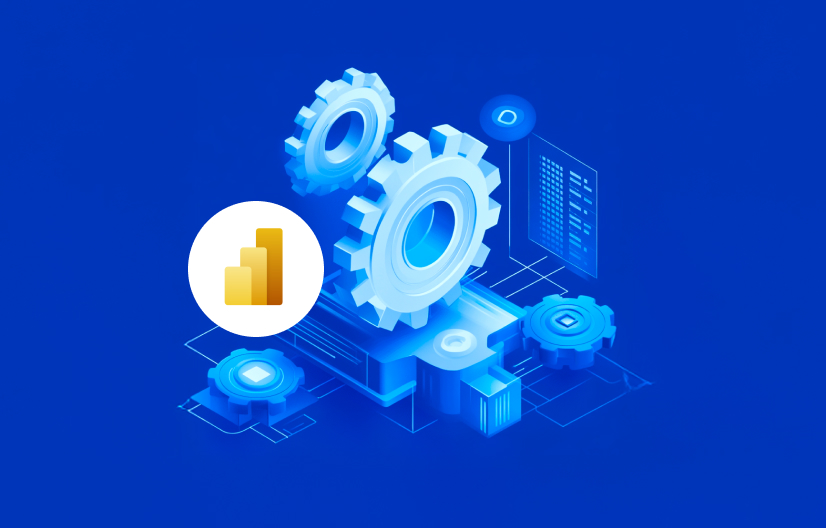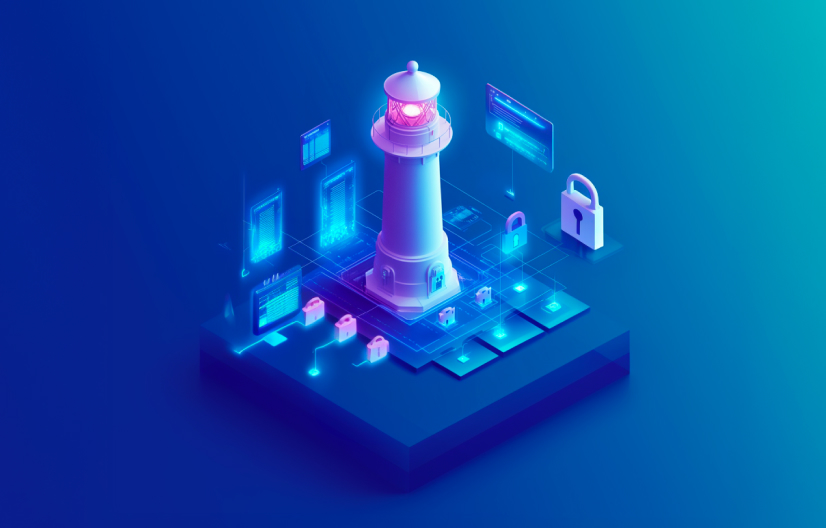
The Total Experience
“There’s a labour shortage. This significantly limits the growth of my business. Without this shortage, our sales volume would probably be twice as big.”
This is what an SME owner says in a recent study by the Business Development Bank of Canada (BDC), reflecting the opinion of more than 64 per cent of managers surveyed.¹
Despite an economic slowdown and significant workforce reductions at large companies over the past year, forecasts for the unemployment rate in Canada and the United States remain at low levels.²
While the impacts vary across different sectors, the information and communications technology (ICT) sector—which includes a growing number of organizations undergoing continuous digital transformation—is among those most affected. In fact, data from the Information and Communications Technology Council (ICTC) suggests there will be more than 200,000 vacant positions in this sector alone by 2025.
Faced with this reality, organizations are adapting to attract and retain the best talent. Tactics such as branding and marketing—formerly reserved for potential customers—now also apply to potential employees. Another tactic gaining popularity is at the junction of technology and human resources: the Total Experience.
Putting the employee before the customer
The idea that a happy employee directly contributes to a satisfied customer is not a new one.
The late Herb Kelleher, who transformed Southwest Airlines, followed a philosophy of putting people first. “If the employees come first, then they’re happy. A motivated employee treats the customer well. The customer is happy, so they keep coming back, which pleases the shareholders. It’s not one of the enduring mysteries of all time, it is just the way it works,” he once said.³
But this isn’t the case in many North American organizations. Rather, an employee is considered an expense while a customer is considered a source of income. The link between the satisfaction of one and the other is not necessarily an easy performance indicator to measure.
But in today’s economic climate, where growth is slowed by a shortage of qualified employees—rather than a lack of customers willing to buy—some companies have decided to revisit this idea from Herb Kelleher.
They’ve come to the conclusion that a company wants the same things from its customers and its employees. After all, if someone tells you “engagement,” “loyalty” and “satisfaction,” who do you think of first? Your customers? Your employees? Or both?
That’s why it’s more important than ever to attract and retain both customers and employees to create lasting value for the organization.
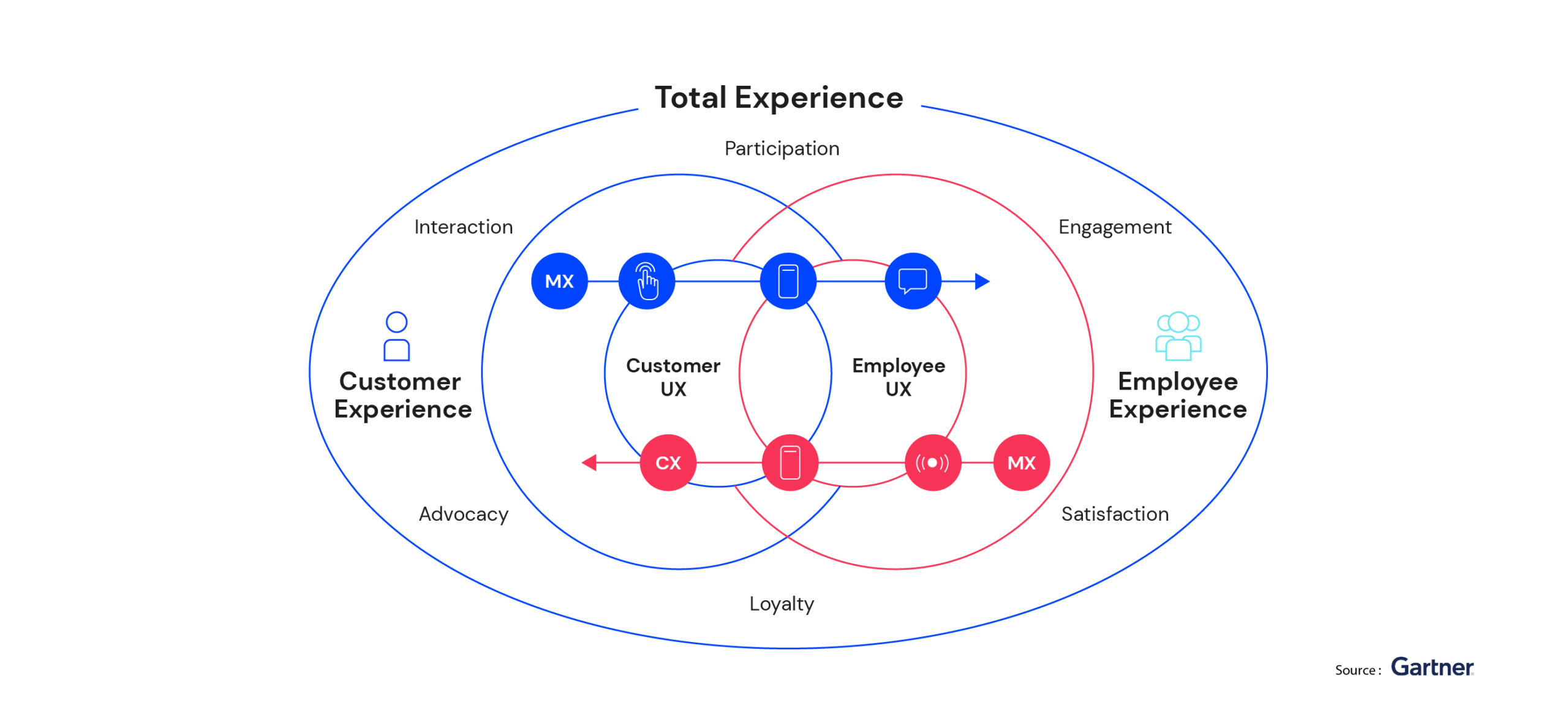
The Total Experience is articulated by the ability to link the experience that customers want in their interactions with a company directly with the experience that employees want, as illustrated in the diagram above. In other words, the UX could apply to the customer and employee simultaneously.
Technology at the heart of experience
For some, Total Experience is simply another buzzword invented by consultants to explain something they already know. After all, isn’t a business all about human interactions? However, what’s different about the Total Experience is the technology behind it: platforms and interfaces.
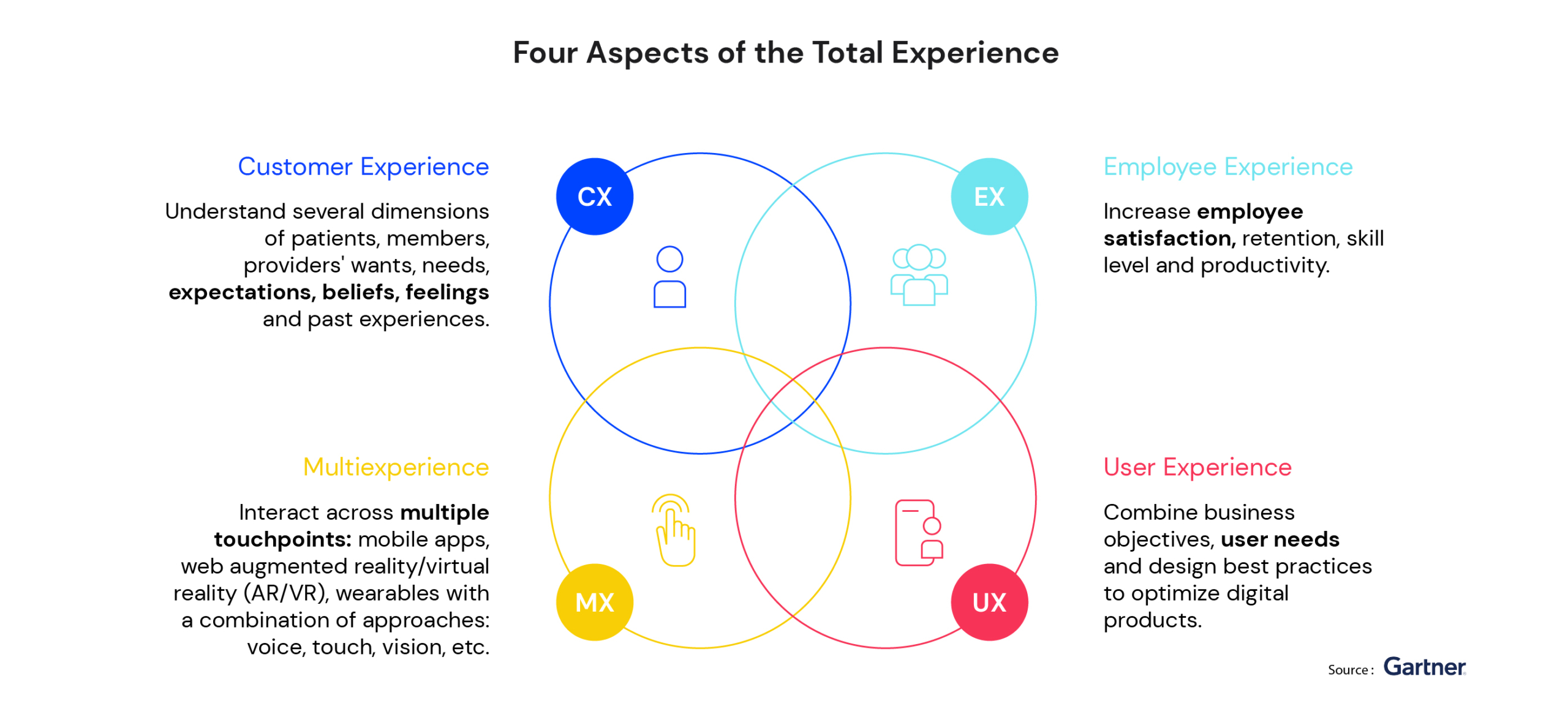
Platforms such as Customer Relationship Management (CRM) and Distributed Control Systems (DCS) now offer enriched user interfaces for both the customer and the employee, allowing them to interact more frequently—whether in person or via text, audio, video or even augmented reality.
A customer can choose the type of interaction that suits them, and the data from this interaction is then stored, digested and transformed to continue to enrich both the customer and employee experience by simplifying tasks and ensuring better monitoring.
Thanks to these platforms and interfaces, an employee who is hired to be the face of the organization can spend more time actually serving customers than completing administrative tasks. This helps enrich the employee experience while improving the customer experience with more proactive service.
Where to start?
The Total Experience framework has four dimensions:
- Customer experience (CX)
- Employee experience (EX)
- Platforms (MX)
- Interfaces (UX)
Many companies consider the customer experience across different touchpoints and then establish processes around it—a process known as customer journey mapping.
But, in today’s world, this should also include the employee dimension (EX), with points of contact divided into interfaces and platforms. At every touchpoint where a customer interacts with an employee, the employee should have the ability to question their experience, too.
Let’s take a fictional example, where a customer logs into their account on your website to chat with an account manager. The targeted performance indicator is speed.
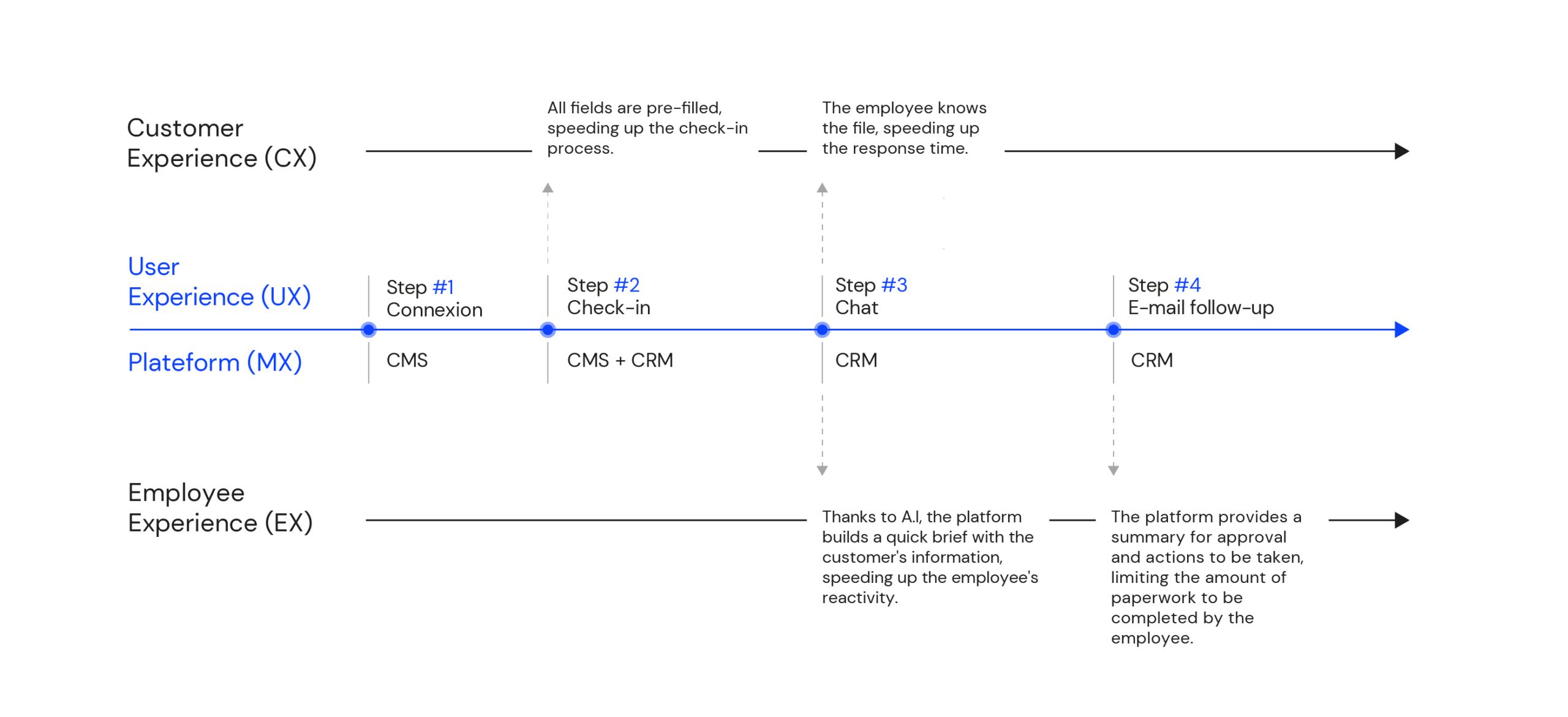
The process is presented in four linear steps, where each step considers the customer, the interface, the platform and the employee. This shows how the customer interacts with the interface, which in turn interacts with a system. The same goes for the employee.
If the desired customer experience is to reduce wait time and send a follow-up email in as little time as possible, using this process can help to find efficiencies in the employee experience using different platforms.
The more friction there is, the less efficient the employee will be, and the less time he or she will spend with customers. By offering a platform that pulls together customers’ data in one place, employees can spend less time searching for information and more time interacting with customers.
At Logient, we believe the Total Experience offers a more holistic approach than the traditional customer journey approach. Indeed, by considering the employee experience and putting technology at the forefront through platforms and interfaces, it can help to increase customer retention and loyalty while simultaneously increasing employee retention and loyalty.
Sources:
1. Bouchard, I. & Al.(2023). Le défi de la décennie : Comment gérer la pénurie de main-d’œuvre au Canada. Banque de développement du Canada. Octobre 2023.
2. IMF. (octobre 5, 2023). États-Unis : taux de chômage de 2013 à 2028 [Graphique]. In Statista. Consulté le 22 mars 2024, from https://fr-statista.com/statistiques/565069/taux-de-chomage-aux-etats-unis/
3. Joseph H. and Jimmie T. Boyett (2001).”The Guru Guide to Entrepreneurship: A Concise Guide to the Best Ideas From the World’s Top Entrepreneurs”. John Wiley & Sons, Inc., 370 pages.
Eichhorn, E., Aggarwal, S., DeClue, M., Oyen-Ustad, L., & Blake, J. (2023). Top Strategic Technology Trends in Consumer Goods Manufacturing for 2023. Gartner, Inc. ID G00766948.
McCarthy, K. (2023). Healthcare and Life Science Business Driver: Total Experience Transformation. Gartner, Inc. ID G00781903.
Kaushik, A., Mickoleit, A., & Snyder, D. (2023). Top Trend in Government: Total Experience. Gartner, Inc. ID G00785088.


















